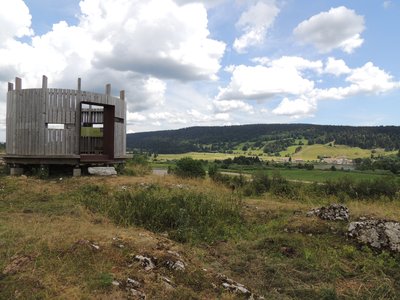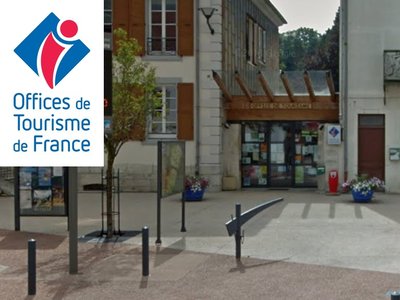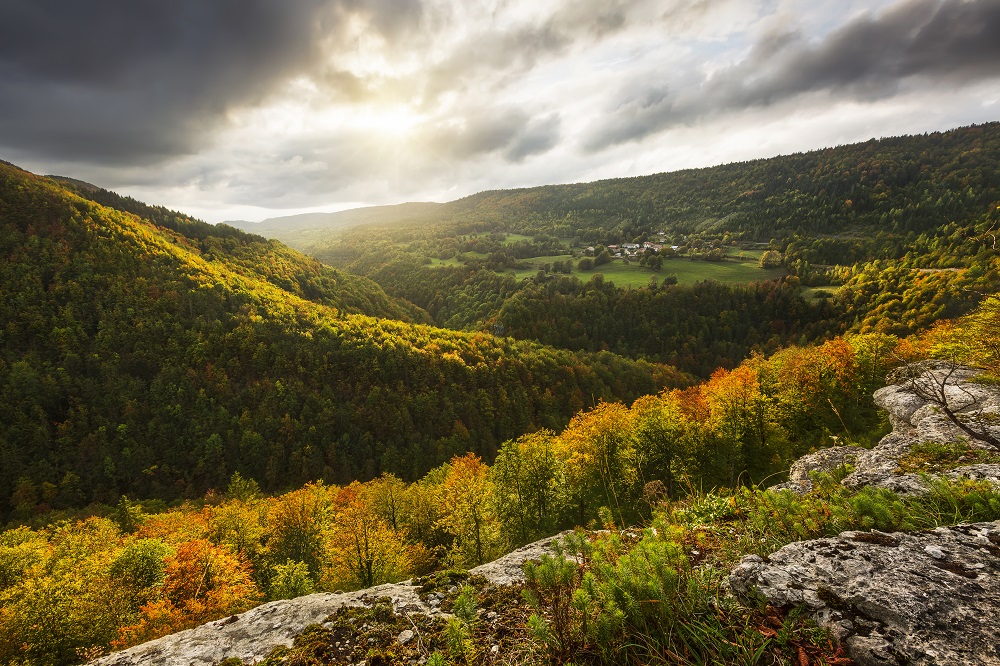
Du lac de l'Abbaye aux gorges de la Bienne
9 points of interest
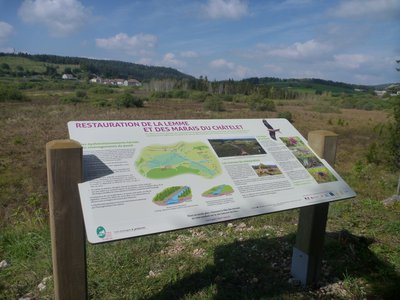
PNRHJ / P.DURLET - Pierre DURLET/ PNRHJ Lakes & RiversBelvedere of Le Chatelet
Here, the Lemme and its tributaries were subject to major ecological restoration works in 2012 to allow the marsh in Le Chatelet to regain its role as a natural waterway regulator.
An interpretive sign explains which malfunctions had appeared due to previous developments, presents which restoration works were carried out and their advantages, and lists a few wildlife and plant species that live in this environment.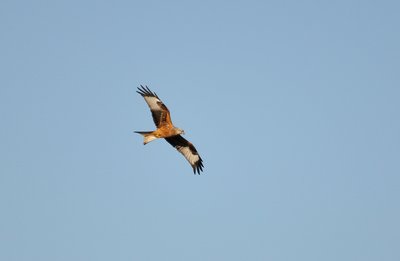
Milan Royal - Fabrice Croset FaunaThe red kite
This raptor is easily recognisable due to its long, indented tail. With its impressive size, this bird is a wonderful glider. It looks for its food in-flight. An opportunist, it watches the ground attentively to find rodents, lizards or the carcasses of other dead animals. Small prey (insects, earthworm or reptiles) can be hunted by walking through the meadows. Therefore, you will often see the red kite above freshly-cut meadows.
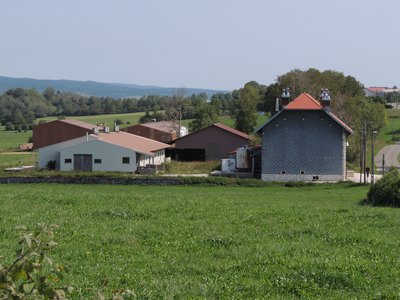
Ancienne fromagerie - PNRHJ - F. Jeanparis History & HeritageView over the old cheese dairy
As from the 18th century, cheese specialisation and the pooling of milk in cooperative structures - “fruitières” - brought farmers out of a self-subsistence economy. Cheese production, which became more and more organised, also became more profitable thanks to the trade networks promoted by “rollers” (road hauliers) in particular. Traders would deliver cheeses to the main French cities, including Lyon.
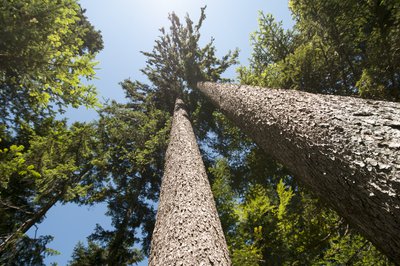
épicéas - PNRHJ / B. BECKER FloraMont Noir forest
Spread across 1873 hectares, the Mont Noir massif is one of the largest Jura forests. It is currently made up of dark-leaved trees, such as fir, spruce and beechwood, hence its name. Stags, boar and roe deer live here alongside the lynx and the western capercaillie. Wood exploitation is an important economic activity for our mountains. However, the forest also accommodates hikers wishing to take long works on the waymarked paths, both during summer and winter. Share this area and be careful if you come across forest works.
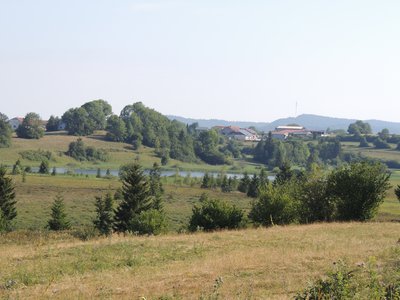
Lac des Rouges Truites - PNRHJ - F. Jeanparis Natural environmentsView over the lac des Rouges Truites peat bog
Inherited from the icebergs which covered the Jura ten thousand years ago and left behind moraines with water-tight bottoms, a peat bog formed from the accumulation of stagnant water full of cold-resistant plants. The moving soil in peat bogs are made up of a thick carpet of peat moss, on which a few well-adjusted plants are able to grow (cranberry, cottongrass, andromeda, drosera, mountain pine, etc.) These fragile environments are of biological interest and must therefore be preserved.
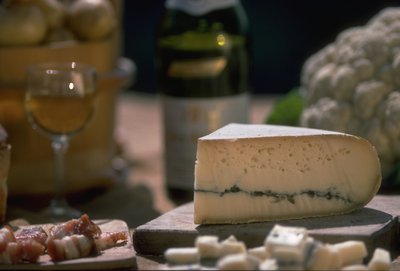
Morbier - PNRHJ / Gilles Prost History & HeritageMorbier cheese
While it is now mainly manufactured in dairy workshops, referred to as “fruitières”, Morbier cheese is originally a “farm cheese” requiring very little milk (60 kg). Its creamy texture is marked by a thin black streak through the middle. Some see this streak as an attempt to copy the blue cheese of Septmoncel, which was very popular at the time; others explain that the curd used to be produced twice daily and was protected from insects thanks to this layer of soot with natural protective properties.
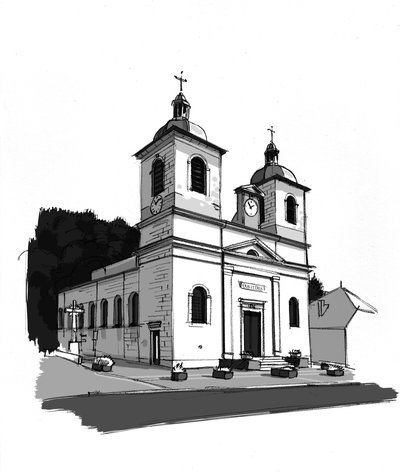
Église de Morbier - PNRHJ / Roman Charpentier History & HeritageMorbier church
The church’s clock, dated 1840, is a “clock that rings every fifteen minutes and indicates the lunar phase using a small two-toned ball positioned above the main dial. The equation of time was engraved onto the church’s southern facade in 1842 by Pierre Claude Paget. This system was later abandoned with the advent of railways requiring the use of a universal time.” (M.P. Renaud, 2006).
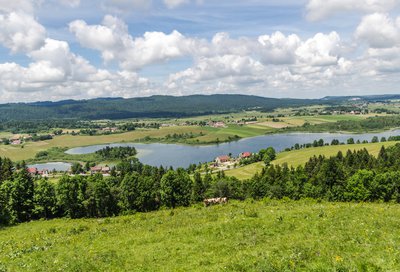
Vue sur le lac de l'Abbaye depuis le belvédère du Moulin - PNRHJ / Nina Verjus ViewpointThe Mill’s Belvedere
The Mill’s Belvedere, on the edge of the valley, offers an overview of nearly all of the Abbaye lake. From here, visitors can learn about how the landscape around the lake has evolved throughout the centuries (interpretive sign).
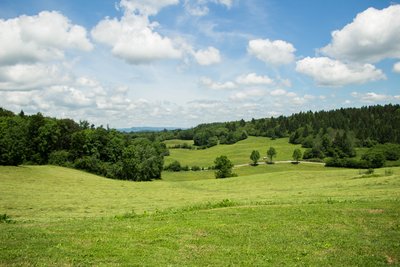
Vue des Jeannez sur les forêts du Grandvaux - (PNRHJ / N.VERJUS) Natural environmentsMixed fir, spruce and beech forests
In the Jura, the montane zone is located at an altitude between 900 and 1700 metres. In this area, forests are mostly comprised of fir trees, spruces and beech trees. Beech, which is still sometimes regionally referred to as “fayard”, is well suited to the mountainous climate. This tree produces beechnuts, which are eaten by game. The hard wood of the beech tree used to be often used by “boisseliers”, wood turners. Today, it is excellent for use as firewood.
In the High-Jura, these mixed forests are usually managed according to a selection system. Unlike plantations, this method of management allows trees of different species and ages to grow on the same site, thereby ensuring increased biodiversity.
Description
Circuit in between two territories, you will discover the plateau of grandvaux and its lake of the Abbey, as well as Morbier and the Hauts de Bienne along its Gorges. Varied and typically Haut-Jura landscape, this loop will allow a beautiful discovery of our territories on all types of paths.
This Jurassic Bike Tours route has digital guidance only. You will not find any markings on the ground. Let yourself be guided with the Jurassic Vélo Tours app, which can be downloaded for free from Google Play Store and App Store. As you go along, signposts will indicate points of interest to discover.
- Departure : Saint-Laurent-en-Grandvaux, tourist information center
- Arrival : Saint-Laurent-en-Grandvaux, tourist information center
- Towns crossed : Saint-Laurent-En-Grandvaux, Lac-Des-Rouges-Truites, Fort-Du-Plasne, Morbier, Hauts De Bienne, Nanchez, and Grande-Riviere Chateau
Forecast
Altimetric profile
Sensitive areas
Western capercaillie
- Impacted practices:
- , Land-based
- Sensitivity periods:
- JanFebMarAprMayJunDec
- Contact:
- Impacted practices:
- Aquatic,
- Sensitivity periods:
- JanFebMarAprMayJunJulAugSepOctNovDec
- Contact:
- Parc naturel régional du Haut-Jura
29 Le Village
39310 Lajoux
03 84 34 12 30
www.parc-haut-jura.fr/
- Impacted practices:
- Aquatic,
- Sensitivity periods:
- JanFebMarAprMayJunJulAugSepOctNovDec
- Contact:
- DREAL Bourgogne-Franche-Comté
Cité administrative VIOTTE
5 voie Gisèle Halimi - BP 31269
25005 BESANÇON CEDEX
Tél : 03 39 59 62 00
Access and parking
Parking place behind the tourist information center.
Report a problem or an error
If you have found an error on this page or if you have noticed any problems during your hike, please report them to us here:
